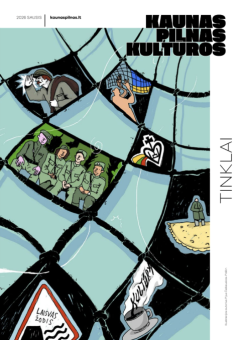DermArs guild exhibition of artistic leather objects Living in Art Forms, which will be running at the M. K. Čiurlionis National Museum of Art until the end of March, invites visitors to get better acquainted with this rare branch of art. After visiting the exhibition, I realized that until now I did not fully understand what can come out of working with leather. The exhibition, set up in a relatively small space, surprises not only with the variety of colors and textures but also with the various forms: from traditional bookbinding works to masks, frames, miniatures, sculptural objects, and reliefs.
While walking around the exhibition and interacting with the artists Gražina Kuprevičienė, Relita Mielė, Ramutė Toliušytė, and Lolita Grabauskienė, it is easy to notice their sincere dedication to leather art. They were led to this art branch by different paths, often by chance, fascinated by the mysteriousness of leather art.
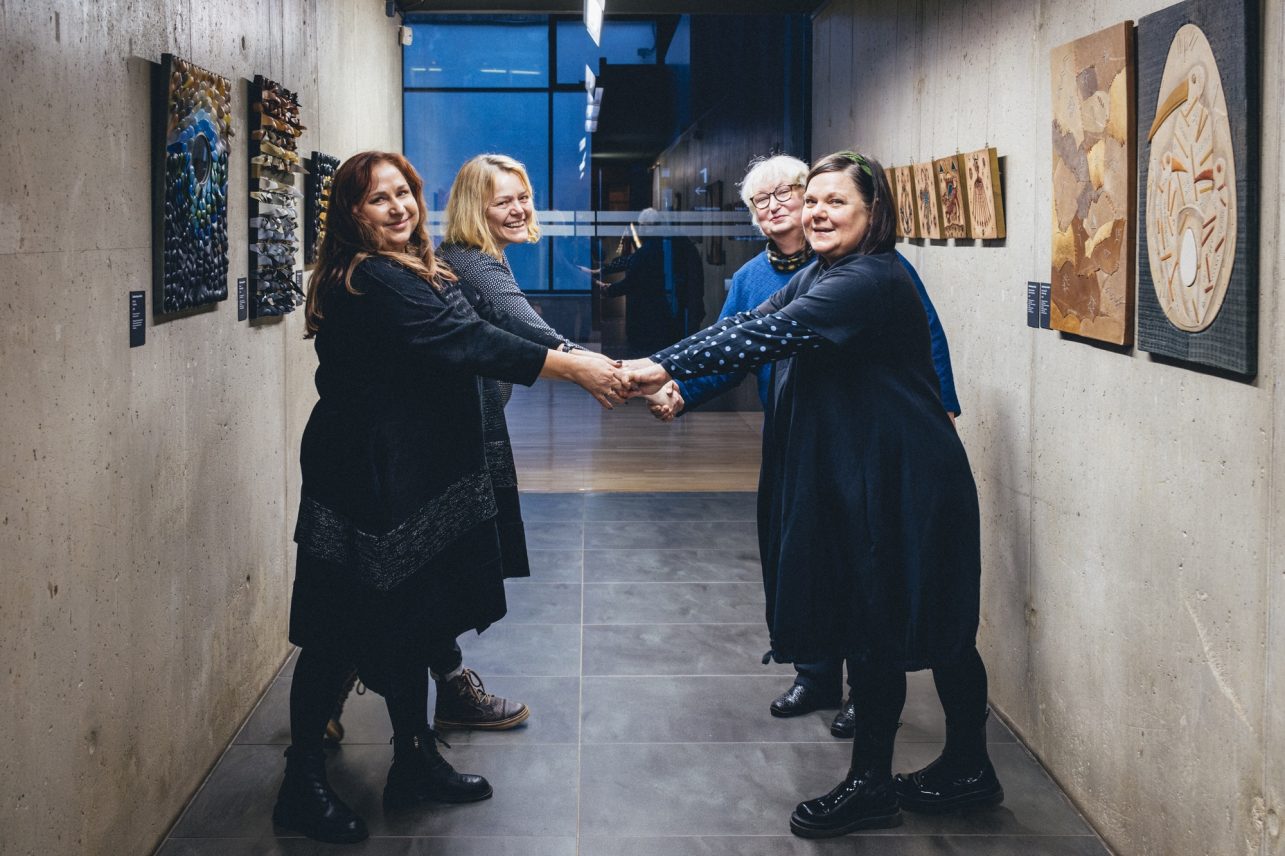
“Leather is pliable, warm, and offers many possibilities. It’s not for nothing that we studied painting, graphic art, and sculpture because leather contains all of that,” G. Kuprevičienė explained, and R. Toliušytė seconded her thoughts and added, “All the possibilities of this branch of art have not yet been exhausted and some are yet to be discovered. The longer you work with leather, the more you understand it. It’s a material with which you can do many different things, including design, jewelry, leather objects, and bookbinding.” When we touched on the use of leather in art, the authors also drew attention to the issue of ethics. Exhibition curator and artist L. Grabauskienė emphasized that, in her opinion, although she is vegetarian, using leather is a way of extending life rather than death, “When the meat is being eaten, why would you throw away the skin? Making art from it gives meaning to the animal’s death, provides them with a second life.”
The artists recall how leather processing techniques have changed over the years; more and more possibilities and materials have appeared. “When you got a piece of leather in the Soviet era, you just trembled with excitement and now you can go and choose and buy the one you want,” G. Kuprevičienė said.
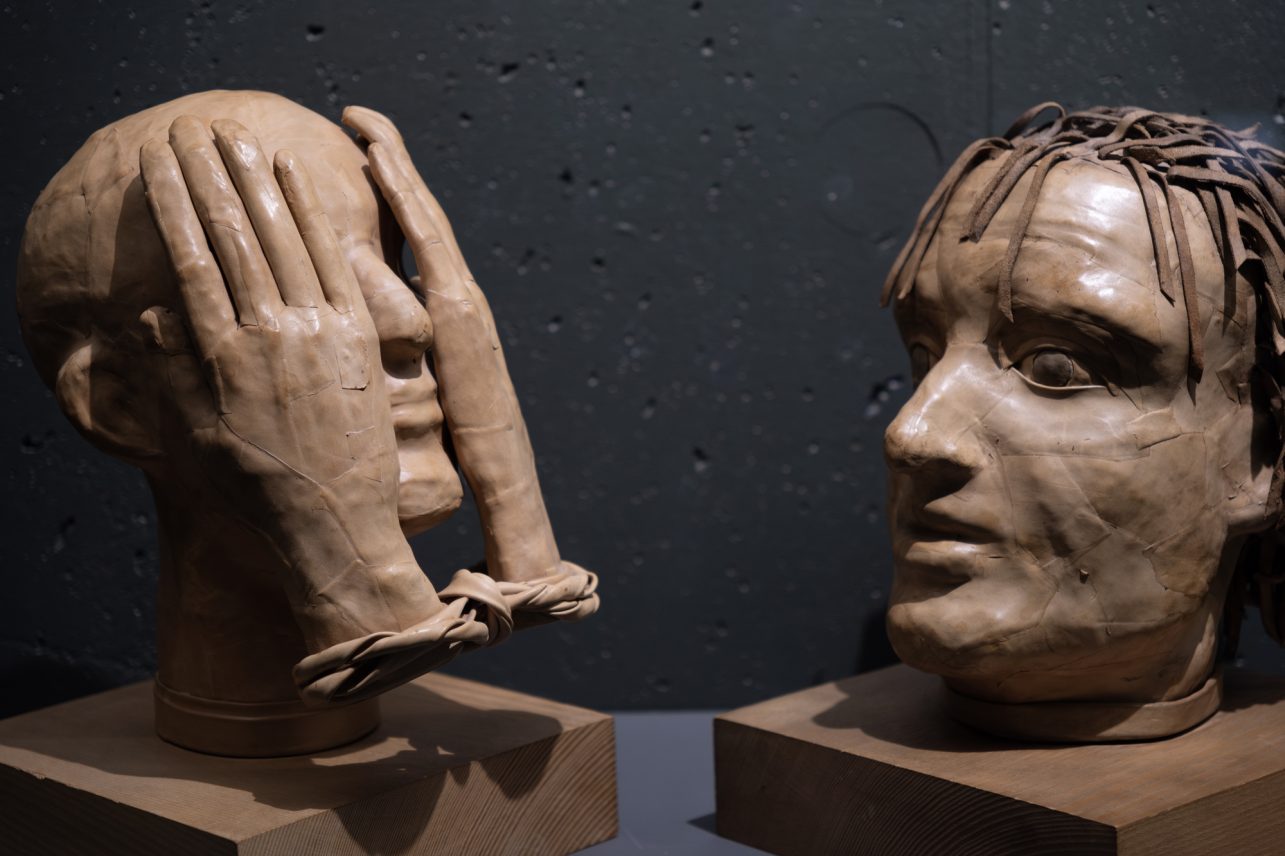
Gražina Kuprevičienė. Nustebimas. 1988 m.
The artists also said that they learned the basics of working with leather at the then Stepas Žukas Art Technical School (now the Faculty of Arts and Education of the Kaunas College), and then continued their studies at the Estonian State University (now the Tallinn Academy of Arts), where they acquired the skill of relief carving. After the independence, some of the guild members obtained their knowledge from the leather art master Rene Berends in Germany. After this program, a new plant-based method of leather tanning without chromium salts reached Lithuania. This method requires one to soak the leather in hot water to release the air. This makes leather pliable; it can be shaped in various ways. When drying, the leather hardens and becomes like wood and acquires a sculptural form. Of course, this is only one of many techniques for working with leather.
The members of DermArs say that they feel a need to experiment and learn something new when creating, and in terms of their favorite processing methods, they single out batik, carving, engraving, linocut, painting, hammering, papier-mâché, shaping leather with heat and leather dust. “I like to combine different materials, for example, leather with ceramics, wood, metal. I try to avoid smooth surfaces, I am attracted to textures, bumps, and reliefs. The longer you bother and process the leather by curling, twisting, and then straightening it again, the more opportunities you discover to create something new,” R. Toliušytė explained. L. Grabauskienė added to her thoughts, “Leather requires a lot of handwork, so to create something beautiful, you have to stroke it longer.”
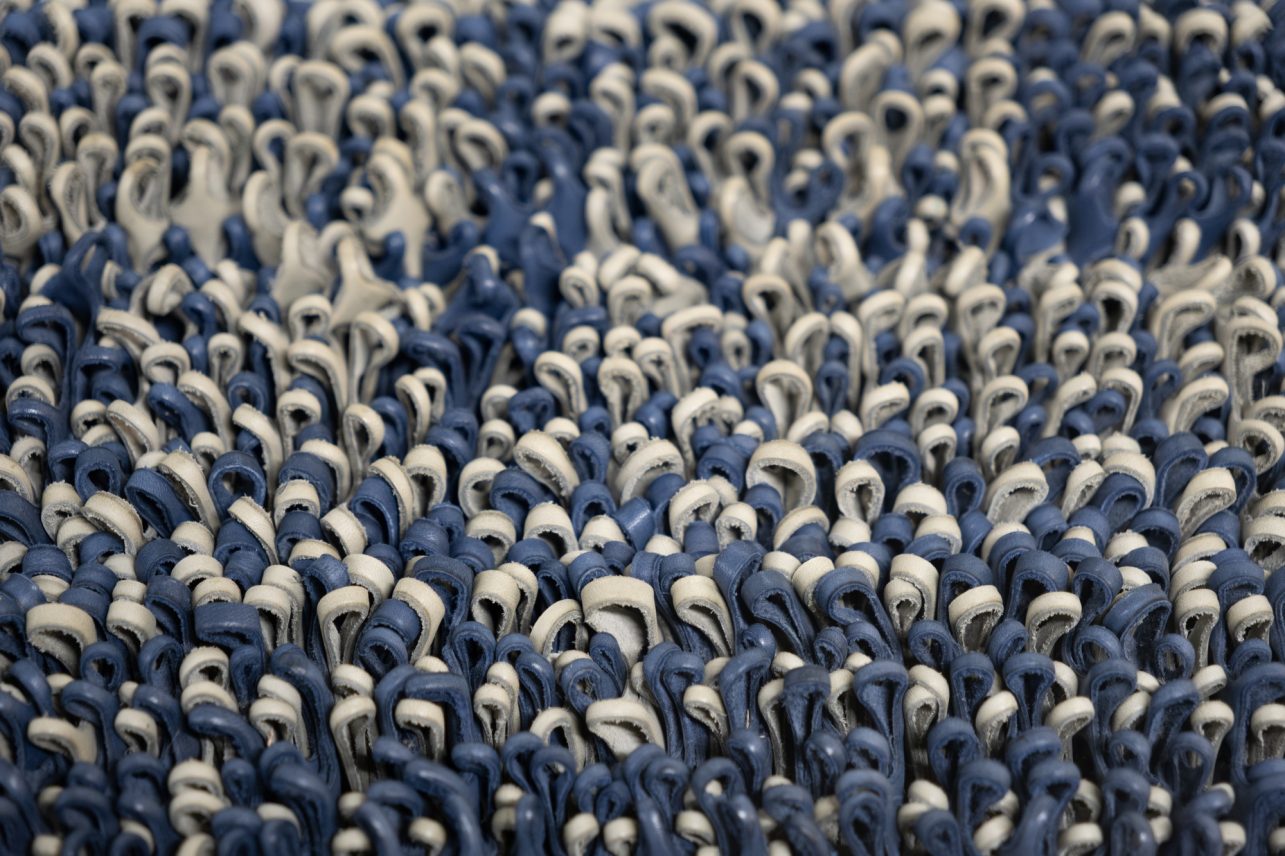
The nine artists featured in the exhibition are from Kaunas and are also active members of the Leather Section of the Lithuanian Artists’ Association. The works they showcase in the exhibition are characterized by a variety of styles, techniques, and ideas. According to L. Grabauskienė, the works collected here aim to show the possibilities of the authors’ thinking, reveal their versatility, and present the direction of the guild, “We created the DermArs guild to keep each other on our toes.” Seeing the works of our colleagues, and active participation in exhibitions, we feel motivated to create ourselves.” We can also trace the origin of the poetic title of the exhibition – Living in Art Forms – to it. “Creative work, free time spent together, communication, and the moments when we self-actualize are like a reflection of our artist group. We support and inspire each other. We live creatively and grow together, which is visually revealed in the exhibitions,” the curator explained.
Leather artists usually prepare new works specifically for planned exhibitions with a predetermined theme. Members of the guild have created artworks for differently themed exhibitions, for example, music, Baltic symbolism, ecology, and human traces in nature, Chiune Sugihara, and the centenary of Kaunas Art School. This exhibition is slightly different as it exhibits both old and new artworks and aims more at showcasing individual artists rather than implementing one theme. The artists featured in the exhibition had to decide which works would represent them best. When asked why these specific works ended up in the exhibition, R. Mielė said that she wanted to show the most memorable ones and create a common composition, “Since we all have created a variety of works on different topics, when choosing the artworks, I sought to select those that would reveal my signature as an artist.”
The main purpose of this exhibition is to popularize leather art, as there is not much easily accessible information about it. “We want people to see, take an interest, and pay attention, so that it would inspire some to study leather art and work in this field. This exhibition exclusively features leather artists, but we often invite artists from other branches – those, who wish to incorporate this material into their work – to exhibit their works with us,” L. Grabauskienė explained.
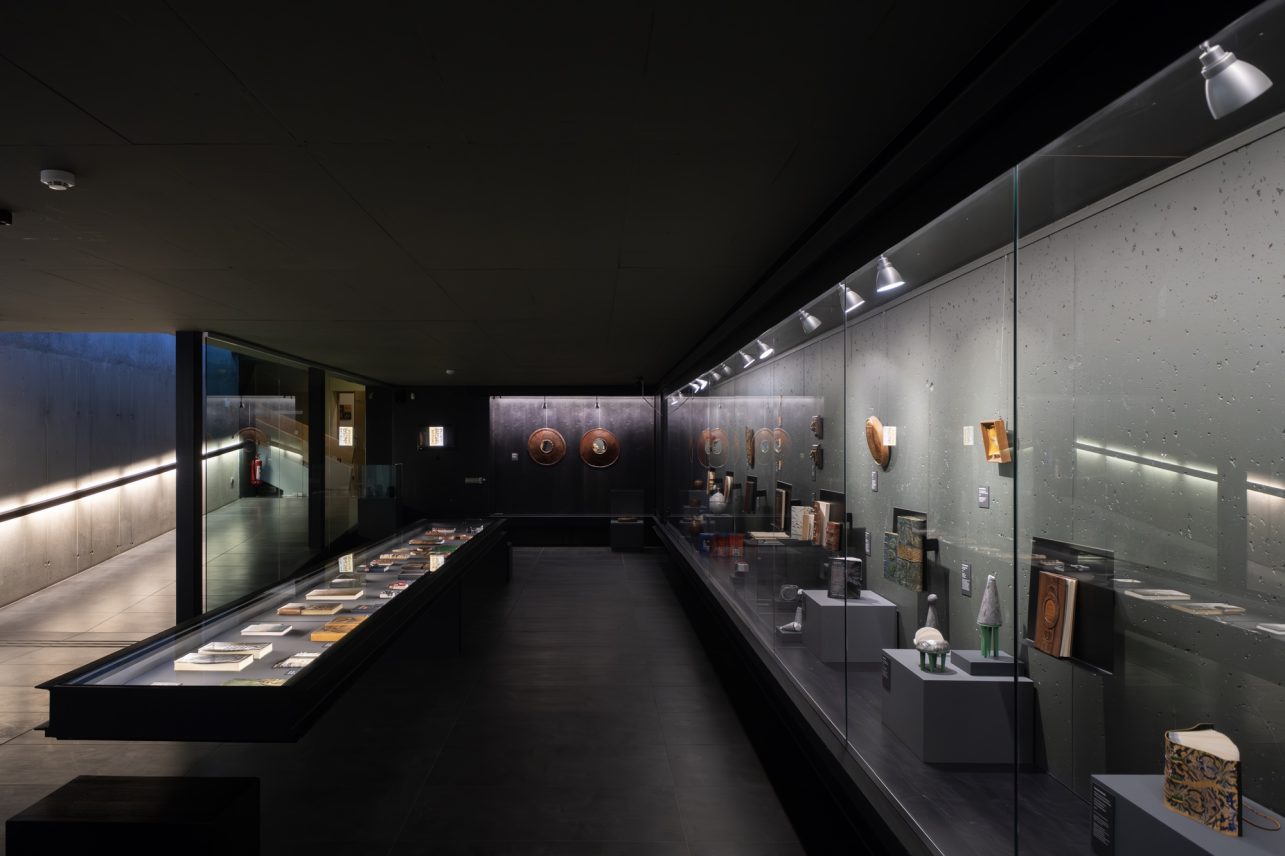
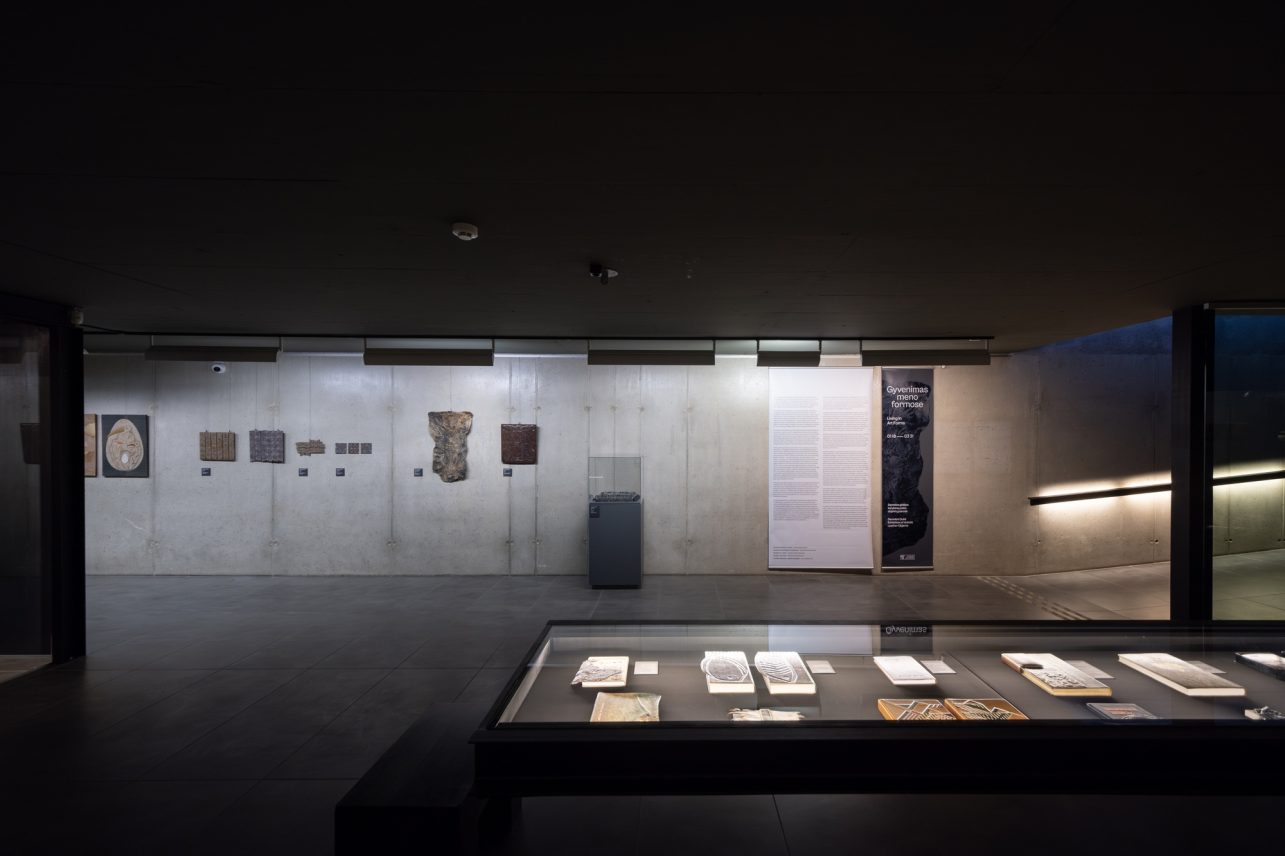
Although members of the DermArs guild are actively working, supporting, and encouraging each other, there are not many young leather artists. In order to discover more people who could join this field, the curator of the exhibition started to organize the Artes Corium (leather art) series, where she invites various artists to participate in exhibitions, conducts workshops, makes leather artworks, and exhibits them. The interviewees emphasize that a large number of young people who have studied leather art choose to continue this work in the field of design and applied arts; they work on custom orders instead of developing their own techniques as artists. The women want people to look at working with leather as an artistic process, just like painting or sculpture.
I want to end the story about leather art or art in leather with the thoughts expressed by the artist and curator of the exhibition, which I think perfectly reflects the interviewees’ attitude towards working with this material and the desire to nurture this branch of art in Lithuania. “Creative work liberates, relaxes, inspires, and unites people. We cannot allow past achievements to die, or the established traditions, culture, and artistic possibilities to be forgotten. For us, it’s a way of life.”
Artists featured in the DermArs guild exhibition of artistic leather objects Living in Art Forms: Jūratė Armonavičiūtė, Danutė Gajauskienė, Lolita Grabauskienė, Gražina Kuprevičienė, Virginija Ligeikienė, Rasa Mačiulienė, Relita Mielė, Algimantas Šlapikas, Ramutė Toliušytė.
Curator of the exhibition: Lolita Grabauskienė.
